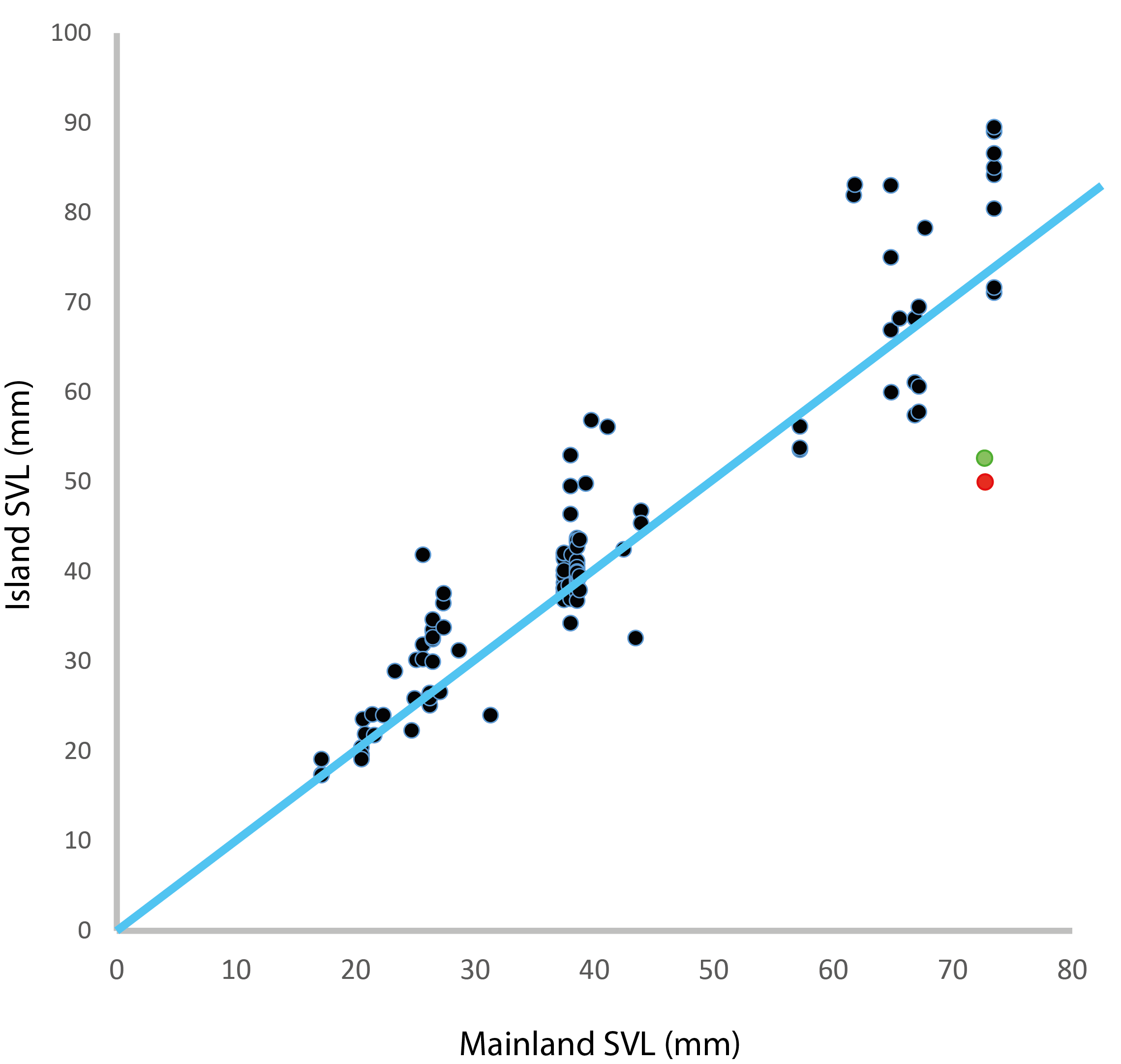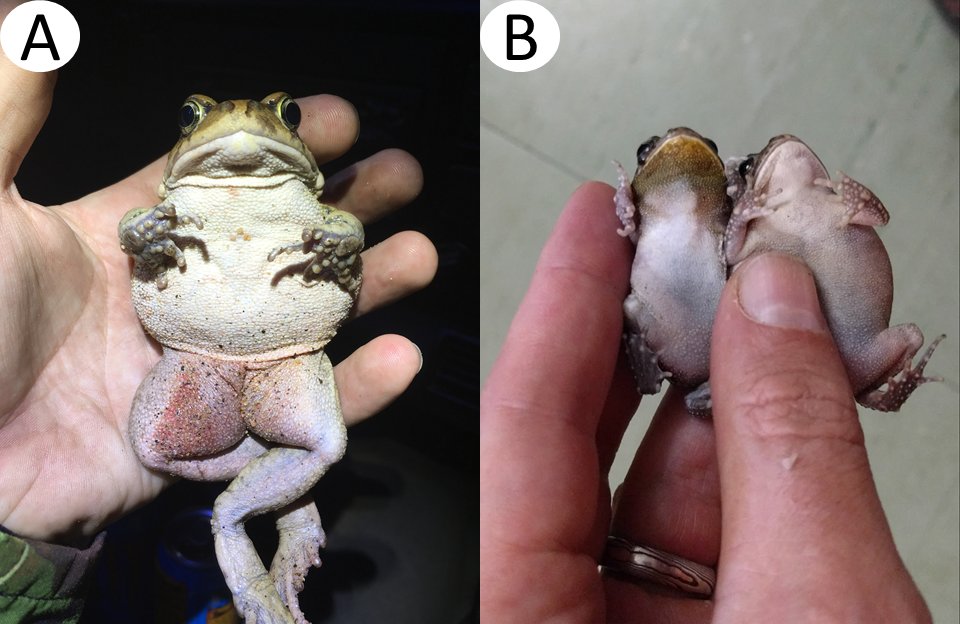Battle of the dwarfs: Guttural Toads turn out to be the largest known shrinkage of any anuran island dwarf
Large analyses reveal a good idea of how major systems have shifted on an evolutionary scale. Yesterday a new paper published inNature Ecology & Evolutionby Ana Benítez-López and colleaguesbrought together more than a thousand species of vertebrates to explore the ‘island rule’: insular dwarfism in large-bodied species and island gigantism in small-bodied species.
As keen readers of this blog will know we published a paper last year (Baxter-Gilbert et al 2020) about rapid shifts in the sizes of Guttural Toads introduced from Durban, South Africa to the islands of Mauritius and Réunion. That paper led by MeaseyLab postdoc, James Baxter Gilbert, revealed that female toads from Mauritius had significantly smaller snout vent length (SVL) than female toads from Durban by 33.9% (red data point below). Similarly female toads from Réunion had significantly smaller SVL than female toads from Durban by 25.9% (green data point below). For males the shift was somewhat smaller (and is not shown on the graph).
We were quite surprised with the magnitude of these changes but we did not appreciate how large they really were until the publication of the study by Anna Bonita Lopez et al, yesterday.

Above I have graphed out their data on anuran SVL together with a one to one bar (blue) indicating size parity. Their data seems pretty globally comprehensive with 116 data points from 42 anuran species. You can see that most examples of frogs on islands show gigantism compared to their mainland counterparts. The two coloured data points represent mean size shifts between Durban and Mauritius (red) and Durban and Réunion (green).
The biggest shift that they record for any taxon on from mainlands to islands is a 25% reduction from 43 mm to 32 mm from the Spanish mainland to Majorca for Alytes dickhilleni and A. muletensis, respectively (Arntzen & Garcia-Paris 1995). These sister taxa are believed to have been separated for more than 4 million years!
As you can see, it is clear that the 33% shift we saw for female Guttural Toads (from Durban to Mauritius - red data point) in less than 100 years is not only remarkable but the largest reduction in body size of any anuran known on the planet!

A nice fun fact for a Friday morning
References
Arntzen, J.W. and García-París, M., 1995. Morphological and allozyme studies of midwife toads (genus Alytes), including the description of two new taxa from Spain. Contributions to Zoology, 65(1), pp.5-34.
Baxter-Gilbert, J., Riley, J.L., Wagener, C., Mohanty, N.P. and Measey, J., 2020. Shrinking before our isles: the rapid expression of insular dwarfism in two invasive populations of guttural toad (Sclerophrys gutturalis). Biology letters, 16(11), p.20200651.
Benítez-López, A., Santini, L., Gallego-Zamorano, J. et al. The island rule explains consistent patterns of body size evolution in terrestrial vertebrates. Nat Ecol Evol (2021). https://doi.org/10.1038/s41559-021-01426-y
